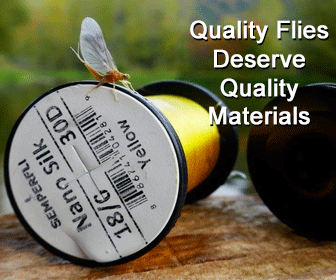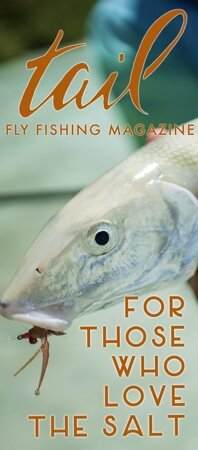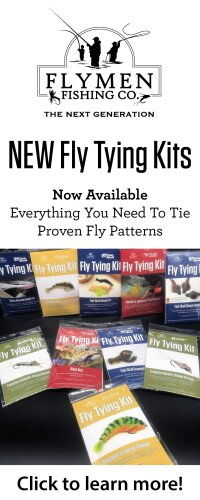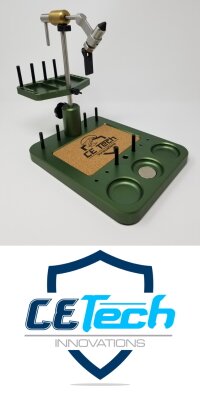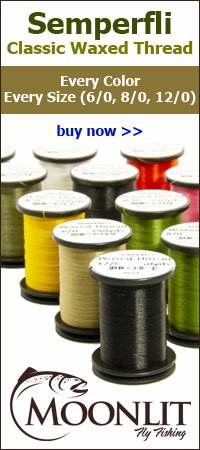As I mentioned in a previous post, I’ve researched and learned a lot about Pat Barnes, who owned a fly shop in West Yellowstone, Montana, back in the mid-40s through the early-70s. The summary below was written by Pat Barnes himself back before he released his book, Ribbons of Blue. As far as I know and according to his son Charles, I don’t think this was ever published anywhere. It is a good summary of his life which of course includes fly tying.
 I was born in Lewistown Montana in 1909, the son of a locomotive engineer on the Jaw Bone R.R, a branch of the Milwaukee Road. Dad was born in Indiana, went to Purdue University and came west when they needed men to push through trains when the west was still pretty rugged. My mother was a native of Montana, one of six children of the G. W. Marshall family who homesteaded on land which is now under Hebgen Lake, Gallatin County, fifteen miles north of West Yellowstone.
I was born in Lewistown Montana in 1909, the son of a locomotive engineer on the Jaw Bone R.R, a branch of the Milwaukee Road. Dad was born in Indiana, went to Purdue University and came west when they needed men to push through trains when the west was still pretty rugged. My mother was a native of Montana, one of six children of the G. W. Marshall family who homesteaded on land which is now under Hebgen Lake, Gallatin County, fifteen miles north of West Yellowstone.
Before I was a year old my father move the family to Three Forks, Montana, on the main R.R. line and there I grew up. My family fished as often as they could and as far back in my memory as I can recall. In fact there was always a standing argument in the family as to who was the best fisherman, Mom or Dad. Mom stuck to grasshoppers and worms and called Dad’s fly rod a “dude outfit”. When I was so young that I thought I would fall through the space between the ties of the N.P. bridge over the Madison River I can remember helping my mother “kick out” a huge Madison River rainbow – possibly in the 10-lb class – which broke her solid cane pole several times before we finally splashed it up on the bank.
My earliest memories of fishing without my parents involved my free day, Saturday. I split kindling, took the ashes from the fireplace and waited for the gang to get together to hike out to the slaughter house on the Jefferson River. There was always bait there – maggots. Our catch would include chubs, perch, carp, suckers, whitefish and an occasional trout. I can remember the fuss made over the first little chub that I caught, my first trout, and the first time I filled the skillet ahead of my dad on one of our fish fries.
Growing up in Montana, at the headwaters of the Missouri River, was for me like stepping out into my grandfather’s time, pioneering, and entering the rapid western development following pre-World War I days. Railroads west were new. Our home went from well to city water, kerosene light to electric, one cow dairy to pasteurized milk, few game laws to more game laws. Can you imaging catching 20 pounds of trout, a limit of 40, and easy to achieve?
Our whole family fished – my mother with a 16-ft cane pole, my father with a 3-piece split cane fly rod. My mother didn’t need a reel. My father did. With a cane pole I could run to the Madison river after school, two miles from our home – and walk back with enough fish to last our family of four for two or three weeks. Sometimes the extras went to the neighbors or the hospital.
During my high school years fishing and fly tying were two of my major interests. A group of boys that were all sons of railroaders rode on passes to Butte each Saturday to take music lessons – drums, trumpet, sax. I went along and spent the day watching the girls in Beaty’s Bug House tie fly patterns. Beatty and Jack Boehme were the only two professional fly tiers in Montana at that time, as far as I know. Both of these men had some special skills that they gave me directly or that I gained through observation.
During my college days, and during the depression, two flies was the equivalent of Saturday’s hamburger special, three pounds for a quarter. I had one faculty member and one garage owner as customers. They helped keep the wolf from the door.
When I went to West Yellowstone to teach, my fly tying kit was honed pretty fine. Enough material for myself, enough to tie a few specials for friends or customers. It consisted of a wood box with four drawers of varying depth and large enough to hold my hooks, my largest wings, my Thompson vise. The lid hinged down to form a tray to hold the vise. It could be gotten out and put away in seconds.
It was in West Yellowstone that I met Don Martinez. After being a steady customer of his while I worked summers for the Forest Service, he asked me if I would work for him as a guide. Up to this point in my fishing experience, all my fishing was done with wet flies of various streamer patterns. My job with the Forest Service was an outdoor job contacting users of the forest. Often the users were fishermen and we had a common interest. Ranger Lyle McNight recommended that I carry my tackle with me on campsite patrol trips and fish evenings with my contacts. By doing this I got to know very well where fish were being caught and on what. Don of course recognized this.
While working for Don I slowly changed from a wet fly fisherman to skilled using dry flies. Don was well educated – a Princeton man. Most of his customers were dry fly fishermen. All they wanted me to do was take them where they could catch fish. Through contacts with Don’s customers and as a guide for him I met many of the greats in the fishing world. Lee Wulff was in West Yellowstone at this time and some of the other early writers. The Long Beach’s casting champion of the year, Dick Miller, came to town, and from him I learned the Double Hall, increasing my wet fly casting distance to take the State Skish Championship two years in a row.
The third year that the tournament was held I was in the army. Stationed in England, I sent for my fly line and reel, borrowed and English rod, and when the travel ban was lifted following the invasion, I was able to fish many of the famous trout streams and lakes in the British Isles, Scotland, and North Ireland.
I had the experience of working summers for Don and two years before the war. In the meantime I changed teaching jobs and moved to Wilsall, Montana, where I met my wife, also in her first year of teaching at Wilsall.
Dan Bailey was just getting established in Livingston at that time. He needed fly tiers. After trying out a few different patterns I finally did tie one pattern that he would accept as salable to his customers. I am sure it was Dan who first brought to Montana standard, quality flies. He brought to my fly tying professionalism, that is, standardization of patterns. Sleeping less than eight hours and fishing the rest, I decided that to make a living at the business I had better have my own shop.
The opportunity came when, following the war, Don Martinez moved to Jackson Hole (Wyoming) and I went back to West Yellowstone to establish a summer business of my own. I went back to school to brush up on teaching techniques, earned my Masters degree, and maintained the summer business.
Following the war, supplies and materials were hard to get. My non-professional fly kit was for a time our chief source of fly tying material. By the time it was used up I had established enough sources of material to get by.
Fishing after the war in the West Yellowstone area was super. Gas rationing had kept people off the streams. Business grew. When we sold everything we had to sell, I guided. Our children came. My wife became the shop keeper and fly tyer while I guided…..
For 36 happy summers I took customers to my favorite streams while my wife, Sigrid, tied flies for them. During those years we developed and popularized several new fly patterns.
My fishing now is primarily on the Missouri River. Retirement has given me time to pursue numerous hobbies: adding to my fly collection, tying new fly patterns, making fishing nets, helping with our Missouri River Chapter of Trout Unlimited and completing my hopper collection. I have seen Montana rivers at their best, and I hope that in some small way I have helped to preserve a fishing heritage for your grandchildren and mine.
 I have some exciting stuff coming to FrankenFly in the very near future, so I wanted to give everyone a look into the laboratory to get a glimpse of what’s ahead.
I have some exciting stuff coming to FrankenFly in the very near future, so I wanted to give everyone a look into the laboratory to get a glimpse of what’s ahead.

 Dennis encourages all who are interested in fly tying and fly fishing to visit his own web site at www.Dennis-Collier.com. Here you will find several articles in their “pre-published” and unedited form (he asks that you overlook all the typos, etc) that also graced the pages of the aforementioned publications; as well as several of Dennis’ signature fly patterns and their respective tying steps. Included on the web site is an art gallery which displays some of Dennis’ fish and fly related art work. Quoting Dennis: “I will be doing some test marketing in the near future to see if there is any interest in Limited Edition fine art prints from some of my pencil drawings of fish, and the pen and ink renderings of fantasy flies.”
Dennis encourages all who are interested in fly tying and fly fishing to visit his own web site at www.Dennis-Collier.com. Here you will find several articles in their “pre-published” and unedited form (he asks that you overlook all the typos, etc) that also graced the pages of the aforementioned publications; as well as several of Dennis’ signature fly patterns and their respective tying steps. Included on the web site is an art gallery which displays some of Dennis’ fish and fly related art work. Quoting Dennis: “I will be doing some test marketing in the near future to see if there is any interest in Limited Edition fine art prints from some of my pencil drawings of fish, and the pen and ink renderings of fantasy flies.”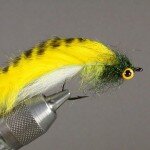
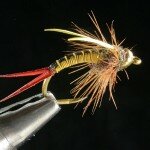
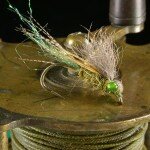
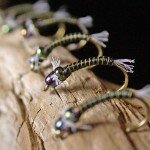
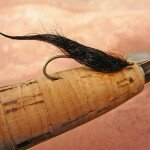
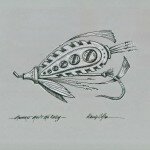
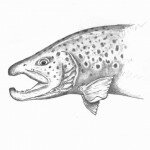

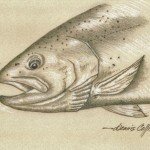
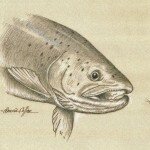
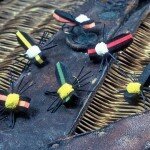
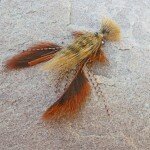
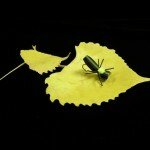
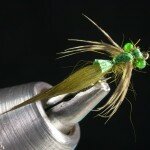
 The authors are best friends, on and off the water, at the keyboard, or working side by side. They make their home in Boise, Idaho; Gretchen’s hometown. Al often remarks that his home will be anywhere Gretchen is so you all know where his heart is. There they operate the family business (BT’s Fly Fishing Products), write, and operate a video production company (fly fishing and tying videos, of course). They got married on April Fool’s Day in 1993 and are as much in love today as when they walked down the aisle together. You might ask, “Why April Fool’s Day?” That’s so Al won’t forget his wedding anniversary, anyone should know that!
The authors are best friends, on and off the water, at the keyboard, or working side by side. They make their home in Boise, Idaho; Gretchen’s hometown. Al often remarks that his home will be anywhere Gretchen is so you all know where his heart is. There they operate the family business (BT’s Fly Fishing Products), write, and operate a video production company (fly fishing and tying videos, of course). They got married on April Fool’s Day in 1993 and are as much in love today as when they walked down the aisle together. You might ask, “Why April Fool’s Day?” That’s so Al won’t forget his wedding anniversary, anyone should know that!
 Professional fly tyer and guide Michael Decoteau is originally from Maine, but now resides in Ohio. His fly tying business, RedSpotFly, is mainly focused on hairwing Atlantic salmon flies, streamers for steelhead, and presentation streamers. He designs patterns for the seasons that will be shared on the Steelhead Alley Tying Blog that will not likely be offered through RedSpotFly, but rather provide tyers with new patterns to add to their own boxes. For example, the carp fly that is pictured here called a Fox Craw.
Professional fly tyer and guide Michael Decoteau is originally from Maine, but now resides in Ohio. His fly tying business, RedSpotFly, is mainly focused on hairwing Atlantic salmon flies, streamers for steelhead, and presentation streamers. He designs patterns for the seasons that will be shared on the Steelhead Alley Tying Blog that will not likely be offered through RedSpotFly, but rather provide tyers with new patterns to add to their own boxes. For example, the carp fly that is pictured here called a Fox Craw. I was born in Lewistown Montana in 1909, the son of a locomotive engineer on the Jaw Bone R.R, a branch of the Milwaukee Road. Dad was born in Indiana, went to Purdue University and came west when they needed men to push through trains when the west was still pretty rugged. My mother was a native of Montana, one of six children of the G. W. Marshall family who homesteaded on land which is now under Hebgen Lake, Gallatin County, fifteen miles north of West Yellowstone.
I was born in Lewistown Montana in 1909, the son of a locomotive engineer on the Jaw Bone R.R, a branch of the Milwaukee Road. Dad was born in Indiana, went to Purdue University and came west when they needed men to push through trains when the west was still pretty rugged. My mother was a native of Montana, one of six children of the G. W. Marshall family who homesteaded on land which is now under Hebgen Lake, Gallatin County, fifteen miles north of West Yellowstone.





